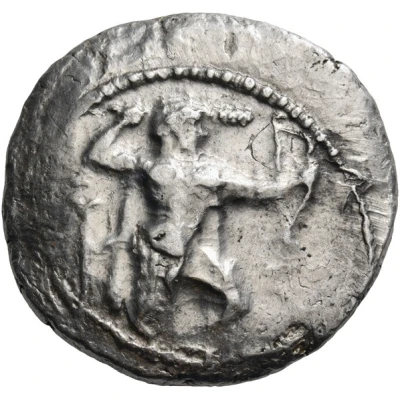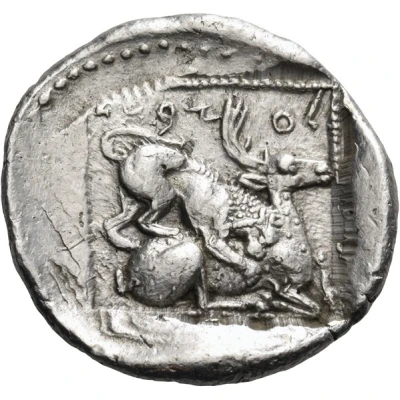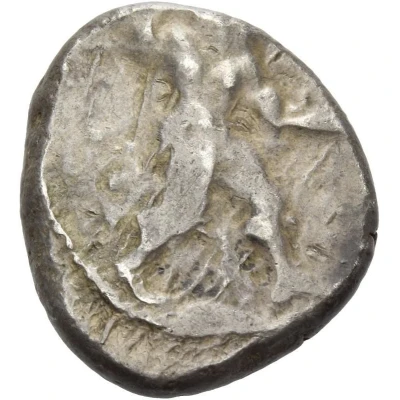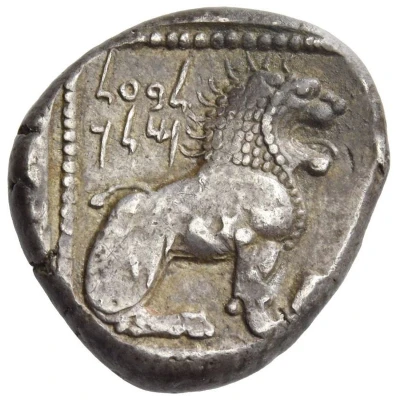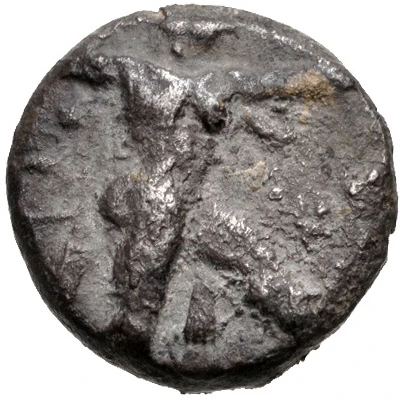
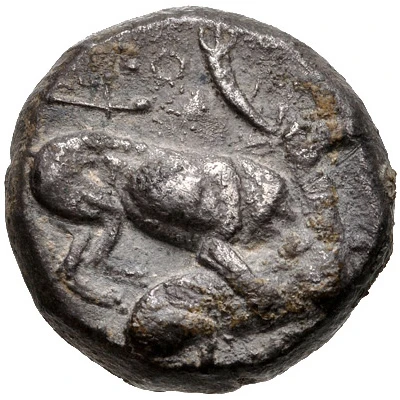

Siglos - Baalmelek II 425 BC - 400 BC
| Silver | 10.77 g | 19 mm |
| Issuer | Kition (Cyprus (ancient)) |
|---|---|
| King | Baalmelek II (425 BC - 400 BC) |
| Type | Standard circulation coin |
| Years | 425 BC - 400 BC |
| Value | Siglos (1) |
| Currency | Drachm |
| Composition | Silver |
| Weight | 10.77 g |
| Diameter | 19 mm |
| Shape | Round (irregular) |
| Technique | Hammered |
| Demonetized | Yes |
| Updated | 2024-10-10 |
| Numista | N#121838 |
|---|---|
| Rarity index | 95% |
Reverse
Lunging lion bringing down a stag that is kneeling towards the right. King's name above it and all is in a beaded square.
Comment
According to the most recent studies, the earlier coinage of Kition was based on a Siglos of 11 g, divided for the smaller denominations by multiples of three.
"The fact that the weight standard used in Cyprus was independent of that used in other parts of the Persian empire is an indication of the internal independence of the kingdoms and of the absence of direct Achaemenid influence and control"
Nonetheless, a cypriot siglos of 11 g permits an easy convertibility with the persic siglos, whose the weight is around 5,50 g.
For further information see :
http://kyprioscharacter.eie.gr/en/scientific-texts/details/numismatics/coinages-of-kings-of-cyprus-from-archaic-to-early-hellenistic-period
BMC Greek Vol.24 Pl.III.1
Interesting fact
One interesting fact about the Siglos - Baalmelek II coin is that it features an image of a Phoenician god, possibly Baal or Melqart, on one side, and an inscription in the Phoenician alphabet on the other. This suggests that the coin was used as a form of currency and also served as a symbol of the cultural and religious influences of the Phoenicians in the region.
